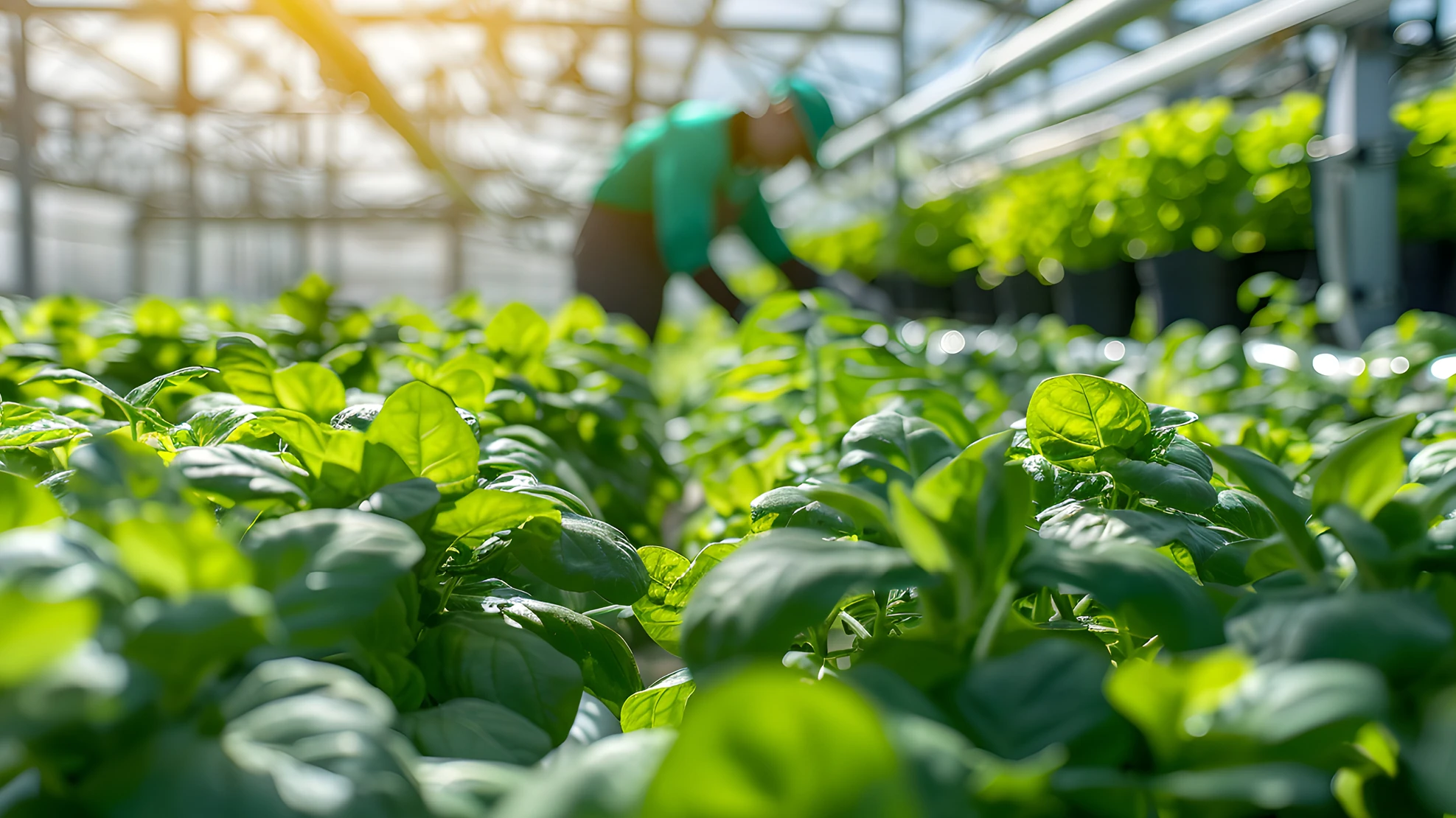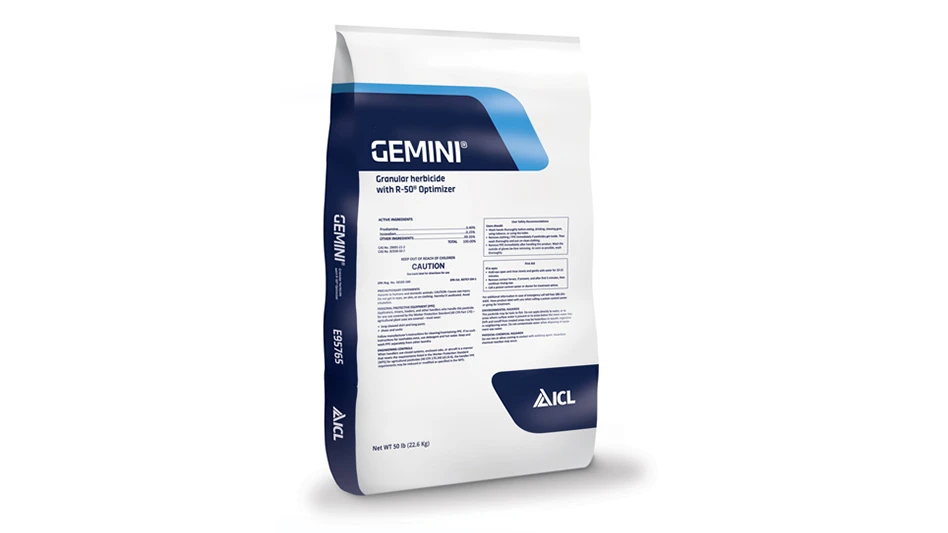
Photo: © Mulderphoto | Adobestock
Jamie Tuinstra, product manager at Modine Manufacturing
Greenhouse Management: Why is it important for greenhouse growers to prepare their heating systems for winter? What can happen if you don’t check out your heating system before it gets cold?
Jamie Tuinstra: There are many reasons a grower would want to inspect their heating equipment before the cold weather starts. First, safety is always the main concern. A grower would want to inspect the unit for any failures of the heat exchanger, burners, and vent pipe. Any failures in these areas could cause an unsafe condition. Looking for cracks, rusting, or blockages in any of those areas is critical. Next, inspecting the internal components of the unit to ensure no critters have gotten into the unit and chewed on any wires. If that has happened, it will certainly cause operational issues. Last, checking the manifold gas pressure to ensure the unit is operating properly for its peak performance. Gas pressure that's too low or high can cause operational issues along with possible higher fuel bills for the grower.
GM: What are some common mistakes growers make when preparing for winter?
JT: One of the most common issues that we see is a lack of maintenance on the units. Not keeping them clean and in proper working order will most likely cause operational issues or premature breakdowns.
GM: What should a grower do differently when operating a greenhouse in the winter versus closing it down?
JT: Really, the only difference in using a house in the winter versus the summer is making sure the heating equipment stays online. Losing a heating source in the winter can be devastating on growers as it has the potential for them to lose their crops. Paying attention to their systems during the heating season is key to making sure these units stay operational throughout the entire winter.
GM: What diseases or pest issues come up in the winter?
JT: The main thing we see as it relates to the heating products is pests. Small critters and bugs tend to look for warmer areas to create a nice home for themselves and a the heating equipment is the perfect area for them. What that causes is a higher risk of them to damage items in the heaters. Chewing on wires and plugging up critical components is the concern. Monitoring that throughout the winter will be key to keeping these units online all season.
GM: How much of a problem is snow? What can growers do to mitigate any risks from snow on their greenhouses?
JT: The main concern with snow and heat equipment is making sure the vent pipes are clear of obstructions. If snow were to block the vent pipes, the system will shut down and not run until it’s cleared. This will obviously cause a no heat situation that the grower does not want. During large snow falls, a grower should visually inspect all of their vent pipes outside the houses to make sure no snow blockages are happening.
GM: Are there any trends or threats on the horizon that are unique to this upcoming winter?
JT: The biggest threat we see is rising energy costs. These costs are probably the biggest or at least one of the biggest expenses for a grower. Having equipment operate at its peak will ensure that the grower is not spending more money than they have to.
GM: What are five things that growers should do right now to prepare for winter?
JT: 1. Visual inspection.
2. Cleaning of the units.
3. Checking gas pressures.
4. Repairs to anything needed.
5. Replacement of old units, if necessary.
Julie Dean, vice president of Wadsworth Control Systems
GM: Why is it important for greenhouse growers to prepare their heating systems for winter?
Julie Dean: It’s best to do maintenance and repairs when the system isn’t critical to operation. There’s no good time for failure but there are worse times like an early cold snap. Also, HVAC and tech support teams are busy when cold weather arrives. Being proactive will offer better access to those who can help you.
GM: What should a grower do differently when operating a greenhouse in the winter versus closing it down?
JD: Growers need to prepare mechanical systems for freezing temps if the greenhouse won’t be in use over the winter. We recommend never completely shutting down a greenhouse, winter or summer. Even if there isn’t a crop, the equipment, most typically the controller, has a range of acceptable temperatures. It’s best to keep a minimum and maximum temperature that won’t damage equipment. It’s also best not to ever completely shut down a greenhouse, summer or winter.
GM: Are there any trends or threats on the horizon that are unique to this upcoming winter?
JD: The trend of greater temperature and moisture extremes means growers have to prepare for a variety of scenarios. If you live in an area with a proven unstable electric grid, you’ll want to have a backup system in place. And finally, possible supply chain or resource disruptions require a review of parts to support the most vulnerable systems. Even if you can receive parts quickly, be prepared to replace things like a spare aspirator board immediately.
GM: What are five things that growers should do right now to prepare for winter?
JD: 1. Perform maintenance on heating system.
2. Test your systems to ensure the control system operates the heating system. Make certain vent and curtain systems are functioning properly and closing fully.
3. Find backup power sources if the power system in the area is at risk.
4. Confirm essential materials have a stable source of supply/stocked inventory.
5. Test your alarm system with false calibration or reading or put one in place if you don’t have one.
Mike Muchow, vice president and project director, and Thad Humphrey, principal engineer, at BioTherm
GM: What do greenhouse growers need to do to prepare their heating systems for winter?
Mike Muchow and Thad Humphrey: Commission their heating systems prior to heating season to confirm their growing environment is safe for their plants by ensuring it remains fully functional during its time of greatest need. Annual maintenance is required for all heating equipment. This includes:
- Verifying gas and air pressure
- Cleaning equipment (burners, fans, filters, pipes, coils)
- Checking pumps, exhaust venting and mixing valves. Make sure they haven’t seized up from non-use, debris buildup, etc.
- Fixing leaks
- Performing combustion checks for gas-fired equipment as required
- For any systems using glycol, checking glycol percentage to verify proper protection levels
- Inspecting motors and oil as needed
GM: What are some mistakes growers make when preparing for winter?
MM & TH: Not fully commissioning their heating systems. Technicians aren't always available, especially when the systems they maintain have the highest demand for operational use.
Not testing HAF fans to ensure proper circulation which also improves heat distribution.
Not testing controls to confirm all systems are fully operational. Not performing the required annual maintenance on all systems. Not allowing enough time for required maintenance. Not sealing air leaks in the glazing. Not freeze protecting any equipment/systems that require this.
GM: What should a grower do differently when operating a greenhouse in the winter versus closing it down?
MM & TH: Shutting a greenhouse down means its contents are susceptible to freezing. Evacuating liquids from water-filled systems will protect the equipment from damage due to the expansion of water becoming ice. If they are operating during the winter, they need to make sure their heating systems are working and sized correctly.
GM: What diseases or pest issues come up in the winter?
MM & TH: With lower light levels and temperatures in the winter, some molds, diseases and pests thrive in these conditions. Make sure to sanitize and/or use appropriate IPM practices to reduce and eliminate potential pests and diseases.
GM: How much of a problem is snow? What can growers do to mitigate any risks from snow on their houses?
MM & TH: Snow loads on structures can be significant and increase the risk of damage to the greenhouse. Damage can be prevented with responsive snow melt heating systems which are ideally located where snow collects along the gutter within the greenhouse. Some growers remove the poly glazing if not heating during the winter.
GM: Are there any trends or threats on the horizon that are unique to this upcoming winter?
MM & TH: A winter El Nino may cause stronger, more intense weather this year. There will be colder temps with record lows and severe storms. Make sure systems are sized properly and have contingencies in place. Another threat is potential gas increases; make sure you’re operating efficiently.
GM: What are five things that growers should do right now to prepare for winter?
MM & TH: 1. Perform the required annual system maintenance.
2. Commission mechanical and controls systems.
3. Secure fuel supply at best rates.
4. Prepare a backup plan (generators, spare parts, local servicing, etc.).
5. Clean the greenhouse glazing to maximize available sunlight.
Get curated news on YOUR industry.
Enter your email to receive our newsletters.
Explore the October 2023 Issue
Check out more from this issue and find your next story to read.
Latest from Greenhouse Management
- Flexible fungicides
- Super Charged Moon Juice from Moon Valley Nurseries now available nationally
- 2025 Proven Winners Horticulture Scholarship applications now open
- How to improve inventory and shipping management in the greenhouse
- Leading Women of Horticulture: Anna Ball, Ball Hort, and Terri McEnaney, Bailey Nurseries
- GM CEA HERB Part 2: A guide to increasing the sowing density of culinary herbs
- GM CEA HERB Part 1: Best practices for producing culinary herbs in controlled environments
- USDA fires experts on invasive pests, including Asian citrus psyllid, chilli thrips






